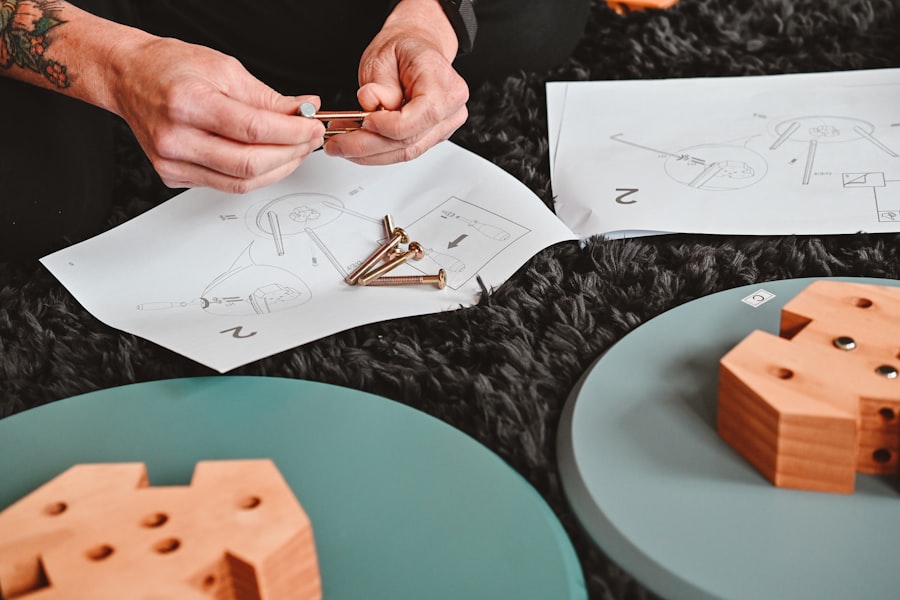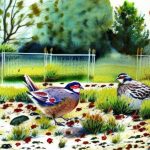Breeder quail are a popular choice for many poultry enthusiasts due to their small size, low maintenance, and high egg production. Breeding quail can be a rewarding and profitable venture for those who are willing to put in the time and effort. DIY breeder quail refers to the practice of breeding and raising quail at home, without the need for expensive equipment or facilities. This approach allows individuals to have more control over the breeding process and ensures that the quail are raised in a healthy and natural environment.
Breeder quail can be raised for various purposes, including egg production, meat, or as pets. They are known for their fast growth rate and high egg production, making them an ideal choice for those looking to start a small-scale poultry operation. DIY breeder quail can be a great option for those who have limited space or resources, as they require minimal maintenance and can be easily housed in a backyard or small enclosure. With the right knowledge and care, breeding quail at home can be a fulfilling and enjoyable experience.
Table of Contents
Key Takeaways
- DIY Breeder Quail are a cost-effective way to produce quail for eggs and meat at home.
- When selecting the right quail breed for breeding, consider factors such as egg production, temperament, and size.
- Setting up a DIY breeder quail enclosure requires attention to space, temperature, and nesting areas.
- Feeding and caring for breeder quail involves providing a balanced diet, clean water, and regular health checks.
- Breeding and incubating quail eggs requires proper nesting materials, temperature control, and regular turning of the eggs.
Selecting the Right Quail Breed for Breeding
When it comes to breeding quail, selecting the right breed is crucial for success. There are several different breeds of quail to choose from, each with its own unique characteristics and traits. Some popular breeds for breeding include Coturnix quail, Bobwhite quail, and California quail. When selecting a breed for breeding, it’s important to consider factors such as egg production, temperament, and size.
Coturnix quail are one of the most popular breeds for breeding due to their high egg production and fast growth rate. They are also known for their docile nature, making them easy to handle and care for. Bobwhite quail, on the other hand, are known for their distinctive call and are often bred for hunting purposes. California quail are another popular breed for breeding, known for their striking appearance and adaptability to various climates. When selecting a breed for breeding, it’s important to consider your specific goals and needs, as well as the climate and environment in which the quail will be raised.
Setting Up a DIY Breeder Quail Enclosure
Setting up a DIY breeder quail enclosure is an important step in the breeding process. The enclosure should provide a safe and comfortable environment for the quail to breed and lay eggs. When setting up a breeder quail enclosure, there are several factors to consider, including space requirements, housing materials, and environmental conditions.
The size of the enclosure will depend on the number of quail being bred, but as a general rule of thumb, each quail should have at least 1 square foot of space. The enclosure should be constructed using sturdy materials such as wire mesh or wood, with a secure roof to protect the quail from predators. It’s also important to provide adequate ventilation and natural light within the enclosure to ensure the health and well-being of the quail.
In addition to the physical structure of the enclosure, it’s important to consider the environmental conditions within the space. Breeder quail require a warm and dry environment to thrive, so it’s important to provide bedding material such as straw or wood shavings to keep the enclosure clean and dry. Access to fresh water and a balanced diet is also essential for the health and productivity of breeder quail.
Feeding and Caring for Breeder Quail
Feeding and caring for breeder quail is essential for their health and productivity. Quail require a balanced diet that includes a mix of commercial feed, grains, greens, and protein sources. When feeding breeder quail, it’s important to provide access to fresh water at all times and monitor their food intake to ensure they are receiving adequate nutrition.
Commercial quail feed is readily available at most feed stores and is formulated specifically for the nutritional needs of quail. In addition to commercial feed, breeder quail can also be fed grains such as millet, oats, and barley, as well as leafy greens and vegetables. Protein sources such as mealworms or crickets can also be offered to supplement their diet.
In addition to providing a balanced diet, it’s important to regularly clean the breeder quail enclosure to maintain a healthy environment. This includes removing soiled bedding, providing fresh water daily, and monitoring the overall health of the quail. Regular health checks should be conducted to identify any signs of illness or injury, and appropriate measures should be taken to address any issues that arise.
Breeding and Incubating Quail Eggs
Breeding and incubating quail eggs is a key aspect of DIY breeder quail management. Quail are prolific layers and can produce a large number of eggs throughout the breeding season. To successfully breed quail, it’s important to provide a suitable environment for mating and egg laying, as well as proper incubation conditions for hatching.
When breeding quail, it’s important to provide a ratio of one male to every three to five females to ensure successful mating. The male will fertilize the eggs as they are laid by the females, which typically occurs in secluded nesting areas within the enclosure. Once the eggs are laid, they can be collected and placed in an incubator for hatching.
Incubating quail eggs requires careful attention to temperature and humidity levels to ensure successful hatching. Quail eggs typically take around 17-18 days to hatch, with optimal temperature and humidity levels ranging from 99-100 degrees Fahrenheit and 50-60% humidity. It’s important to regularly monitor the incubator during this time to ensure that conditions remain stable and that any issues are promptly addressed.
Managing the Health and Well-being of Breeder Quail

Managing the health and well-being of breeder quail is essential for their long-term productivity and success. Regular health checks should be conducted to monitor the overall condition of the quail and identify any signs of illness or injury. It’s important to provide a clean and comfortable environment for the quail, with access to fresh water, balanced nutrition, and adequate space for exercise.
In addition to regular health checks, it’s important to implement preventative measures to protect breeder quail from common diseases and parasites. This includes regular cleaning of the enclosure, providing a balanced diet, and monitoring for signs of illness such as lethargy, loss of appetite, or changes in behavior. In the event that illness or injury does occur, it’s important to seek veterinary care promptly to address any issues that arise.
It’s also important to consider the mental well-being of breeder quail by providing enrichment activities within the enclosure. This can include providing perches or platforms for roosting, as well as access to natural materials such as branches or nesting materials. Providing a stimulating environment can help reduce stress and promote overall well-being for breeder quail.
Selling or Utilizing the Offspring of Breeder Quail
Once breeder quail have successfully hatched their offspring, there are several options for utilizing or selling the young birds. Depending on your goals and needs, you may choose to raise the offspring for egg production, meat, or as pets. Breeder quail offspring can also be sold to other poultry enthusiasts or farmers looking to start their own breeding operation.
If you choose to raise the offspring for egg production or meat, it’s important to provide them with a suitable environment that meets their specific needs. This includes providing access to balanced nutrition, clean water, and adequate space for exercise. Regular health checks should also be conducted to monitor the overall condition of the young birds and address any issues that arise.
If you choose to sell the offspring of breeder quail, it’s important to market them effectively to potential buyers. This can include advertising through online platforms or local poultry enthusiast groups, as well as networking with other breeders or farmers in your area. Providing information about the breed, age, and health status of the young birds can help attract potential buyers and ensure that they are placed in suitable homes.
In conclusion, DIY breeder quail management requires careful attention to breeding, feeding, housing, and overall health care practices. With the right knowledge and care, breeding quail at home can be a fulfilling and enjoyable experience that can lead to a sustainable source of eggs or meat production. By following best practices in breeding and care, individuals can successfully raise healthy breeder quail that contribute positively to their overall well-being and productivity.
If you’re interested in DIY breeder quail, you might also want to check out Poultry Wizard’s article on chicken coop run plans. It offers valuable insights into creating a safe and functional space for your poultry.
FAQs
What is a DIY breeder quail?
A DIY breeder quail refers to the practice of breeding quail at home using do-it-yourself methods and equipment. This can include building your own quail housing, incubating and hatching eggs, and raising the quail chicks.
What are the benefits of DIY breeder quail?
DIY breeder quail allows individuals to have more control over the breeding process and the quality of care provided to the quail. It also provides a hands-on learning experience and can be a cost-effective way to raise quail for eggs or meat.
What do I need to start a DIY breeder quail project?
To start a DIY breeder quail project, you will need suitable housing for the quail, an incubator for hatching eggs, feed and water containers, and a secure outdoor space for the quail to roam. Additionally, you will need to research and understand the specific needs of quail in terms of temperature, diet, and breeding conditions.
What are some common challenges with DIY breeder quail?
Common challenges with DIY breeder quail can include maintaining proper temperature and humidity levels in the incubator, preventing disease and parasites in the quail, and ensuring the safety and security of the quail housing. It is important to be prepared for these challenges and to seek advice from experienced breeders if needed.
Are there any legal considerations for DIY breeder quail?
In some areas, there may be regulations or permits required for breeding quail, especially if it is for commercial purposes. It is important to research and comply with any local laws or regulations regarding the breeding and keeping of quail.
Meet Walter, the feathered-friend fanatic of Florida! Nestled in the sunshine state, Walter struts through life with his feathered companions, clucking his way to happiness. With a coop that’s fancier than a five-star hotel, he’s the Don Juan of the chicken world. When he’s not teaching his hens to do the cha-cha, you’ll find him in a heated debate with his prized rooster, Sir Clucks-a-Lot. Walter’s poultry passion is no yolk; he’s the sunny-side-up guy you never knew you needed in your flock of friends!







